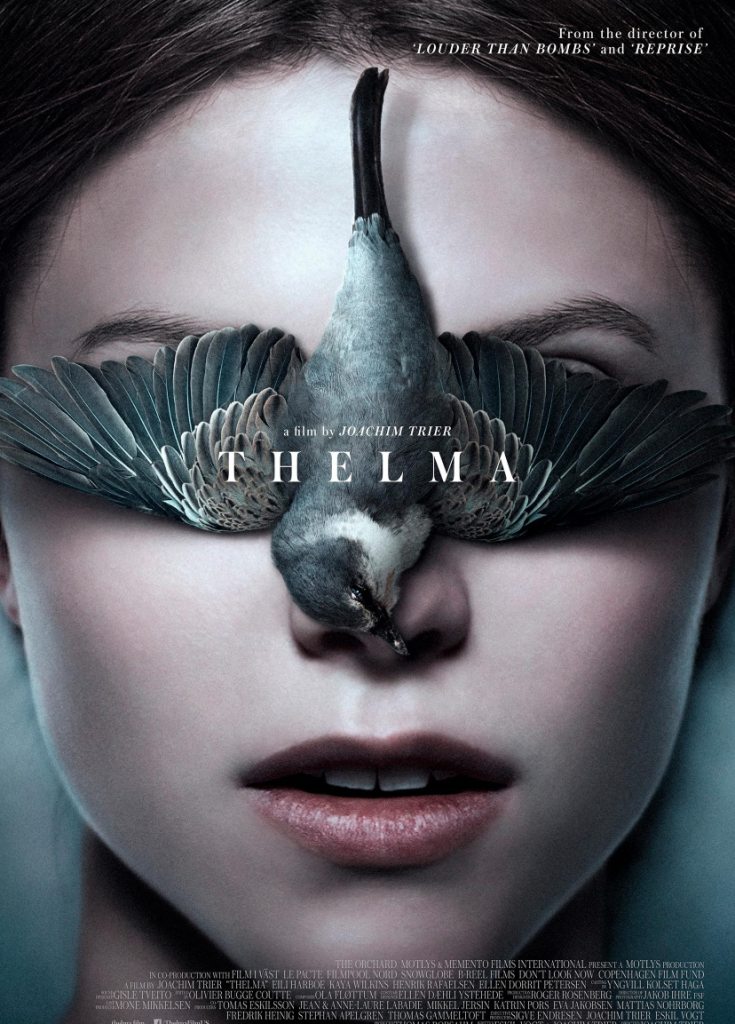Thelma [2017] : A Striking Tale of Self-Discovery with Spellbinding Imagery
Norwegian film-maker Joachim Trier’s movies are about young people in turmoil, whose repressed feelings fester within an exterior facade of gentle, placid demeanor. Although his narrative digs into arsenal of unspoken grievances, there’s a sense of poetic poignance in Trier’s imagery which makes the emotional beat much more intimate and indelible. Aided by super-subtle performances, the director often externalizes the repressed emotion by meticulous detailing. While the unrelieved gloom in Joachim Trier’s first three movies – Reprise, Oslo August 31st, and Louder than Bombs – was intricately manifested within unadorned reality, the latest feature Thelma (2017) is a fascinating blend of reality and other-worldliness. At its heart, Thelma is a tale of female sexual awakening and a stricture on austere Christianity, but the narrative is further embellished by inclusion of supernatural elements. From Carl T. Dreyer’s Day of Wrath (1943) to Julie Ducornau’s Raw (2017), movies have continued to harp on the idea of how familial and other institutions label women’s desire to maintain control over their voices and bodies as a form of insanity or hysteria. The supernatural powers or other seemingly horrifying behavior on the part of women protagonist in such films are hinted as an externalized visualization of the repressed feeling. Maybe, telekinesis and despairing female teenager may not be an original thought, but Thelma stays engrossing due to the way Joachim Trier marriages gorgeous Bergman-esque artistic flourishes with the eeriness of exploitative horror.
From the very first scene, Thelma hints at Trier’s extremely cinematic use of the atmosphere. A father and his little girl walks over a frozen landscape for a hunting trip in remote corner of Norway. In one shot the girl is seen from under the crystalline surface of ice as if the girl itself is trapped in the frigid surroundings. Dad aims his shotgun at a fawn, but when the girl examines the fawn, dad slowly turns the gun on her. However, this shocking revelation smoothly cuts before delineating any possible catharsis. Now the little girl named Thelma (Eili Harboe) has grown into a sensitive and wide-eyed teenager, attending freshman year in an Oslo University to study biology. Once again director Trier introduces the character by first observing the overwhelming vastness of space. The icy-waters are now replaced with big blocks of concrete buildings (seen from an impossibly high camera angle). Raised by religiously conservative parents (Henrik Rafaelsen & Ellen Dorrit Petersen) in an isolated house, Thelma finds herself for the first time amidst a vibrant community.
Joachim Trier’s intoxicating imagery (DoP Jakob Ihre) and refined approach to the familiar material is what stops us from bluntly calling it as ‘supernatural lesbian thriller’. Even though the narrative has its share of unnerving set-pieces, Trier’s approach here is intimate and understated, compared to the elaborate genre thrills of, say, Brian de Palma’s Carrie (1976). Director Trier doesn’t elevate the supernatural phenomena for the sake of shock or thrill visual tactics. He uses the ominous developments to deeply look into the character’s inner turmoil. So what seems like mere stylistic elements gradually brings the darker undercurrents to the fore. And so, the terror is more of an existential kind and cuts a lot deeper than the usually forgettable jump scares. From serpents slithering in dreams to coalescence of white milk with the girl’s blood and references to the baptismal nature of water, Thelma has plenty of Christian imagery which perfectly adds to the ambivalent eeriness of the narrative.
The script written by Trier and his frequent collaborator Eskil Vogt (who himself made his directorial debut with the brilliant dram ‘Blind’) is based more on poetic imagery than plot. The spectacular aspect is how the duo links the cinematic images to the story and themes. With bird’s eye gazes, visions of submersion, icy landscapes, and swaying trees, the location and space itself becomes an important character in Trier-Vogt’s narrative. Unlike many films that deal with individual repression through claustrophobic spaces and close-up shots, Trier positions his character within stiff open spaces to hint at the emotional castration amidst the wide, functional structures. The performances are all top-notch, especially from Eili Harboe who bestows the strange mix of courage and frailty to the titular character. Harboe’s method acting (she did all her underwater stunts and went through challenging seizure therapy to prepare for the role) distinctly implicates Thelma’s internal struggles. May be after careful buildup of Thelma’s supernatural capabilities (through sleek flashback sequences), some would be disappointed by the lack of a bigger pay-off. But since Trier perpetually focused on protagonist’s specific emotions rather than providing genre pleasures, avoiding a bloody denouement seems to be the wise decision. In the end, more than revenge, Thelma extends towards compassion and liberation of femininity.
Thelma (116 minutes) is a meticulously crafted and tremendously acted allegorical coming-of-age thriller that elegantly transcends the limitations of its time-worn subject and themes. The ideal intersection of sharp stylization and in-depth characterization makes it a worthwhile movie experience.




